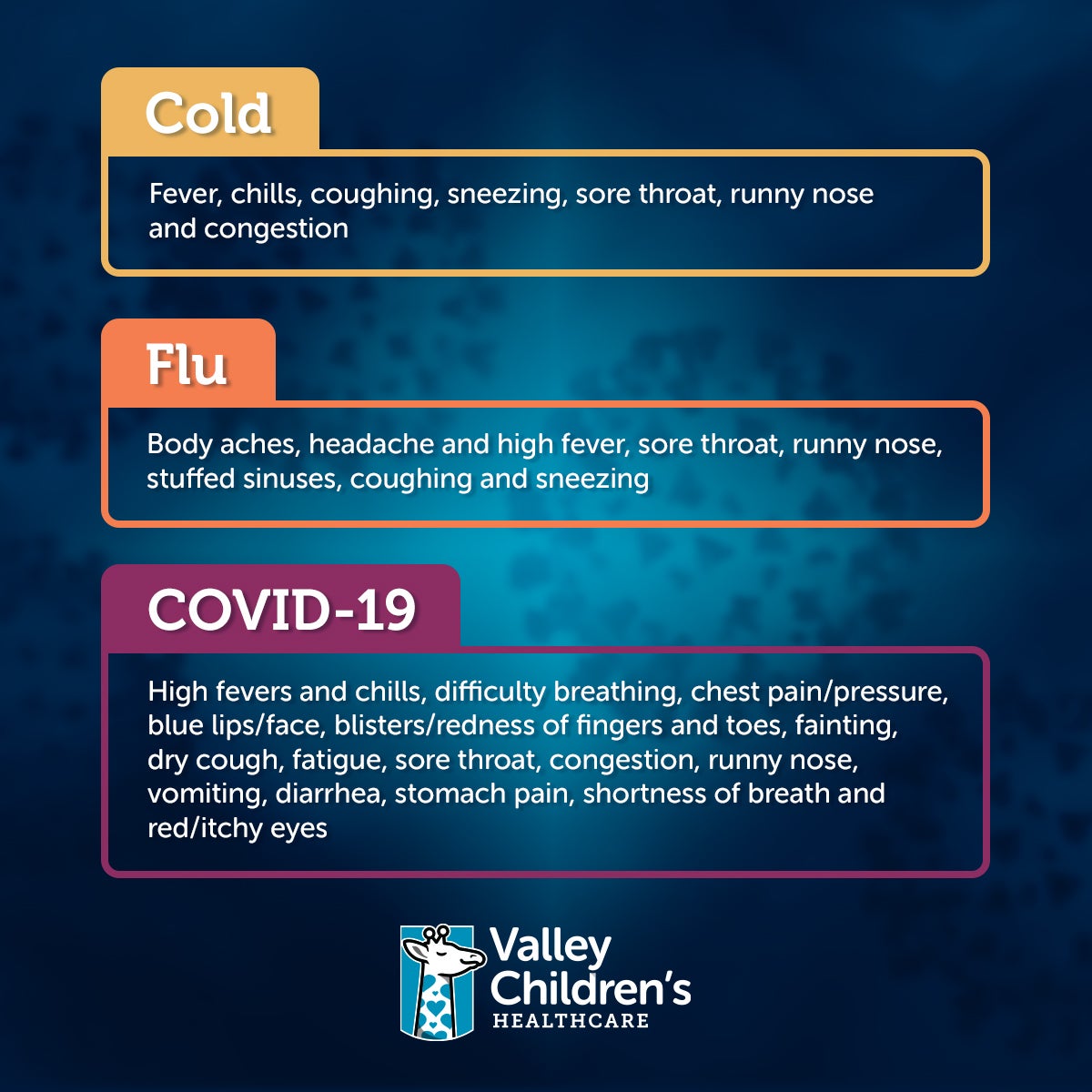Preventing Flu, RSV, COVID-19 and Other Respiratory Illnesses this Winter
November 10, 2022The transition to fall and winter often marks the start of cold and flu season. As the weather grows colder and indoor holiday gatherings become more common, we typically see an influx of children coming to the emergency department with symptoms of the common cold, flu, COVID-19, RSV, rhinoviruses and various other respiratory illnesses.
So how can you protect your child from getting sick with a respiratory illness? And if your child does become ill, how do you know if it’s time to go to the emergency department?
Telling the difference between a cold, influenza, COVID-19, RSV and other illnesses
October through March is often referred to as influenza – or flu – season because we usually see an uptick in flu cases during this time. Symptoms of the flu can include, but are not limited to: cough, fever/chills, body aches and headaches. As the illness progresses, congestion and runny nose may develop. Children who have the common cold usually do not report body aches or headaches or have a high fever, so these symptoms are a good clue that your child may have the flu. However, it is often tricky for parents to tell the difference between the flu and COVID-19 because of their common symptoms.

Respiratory syncytial virus, or RSV, may initially seem like “just a cold,” but for children younger than 3 years, it can become a serious infection that can cause difficulty breathing. Symptoms may include a fever and cough, but may progress into wheezing, rapid and shallow breathing, or labored breathing (often called “belly breathing” because the stomach goes in out as the body works hard to get more air).
Visit the American Academy of Pediatrics’ website for more information about how to tell the difference between COVID-19, flu, RSV and a cold.
How to protect against influenza (flu), RSV and COVID-19
Respiratory viruses like the flu, RSV and COVID-19 can spread when a sick person spreads the virus through droplets from sneezing, coughing, or talking. RSV can also spread when someone comes into contact with surfaces a sick person has touched and then touches their eyes, nose, or mouth. Here are some tips to prevent the spread of respiratory viruses:
- Ensure each member of your family gets the annual flu shot.
- The American Academy of Pediatrics recommends that all children ages 6 months and older receive the flu vaccine.
- Get a COVID-19 vaccine and booster, if eligible. As of June 2022, the COVID-19 vaccine is authorized for anyone ages 6 months and older. Learn more about COVID-19 vaccines >>
- Stay home if you are not feeling well, especially if you have a fever or are showing symptoms of flu or other respiratory virus, and try to self-isolate from others in your household as much as possible. If you must go out, wear a mask to prevent the spread of germs to others.
- Wash your hands regularly, especially before and after eating and after using the restroom.
- Regularly disinfect shared surfaces in your home.
- Cover your coughs and sneezes.
- Don’t share cups, dishes, toys, or other items with someone who has symptoms of a respiratory illness.
- Avoid touching your eyes, nose and mouth.
It’s important to stay vigilant about precautions like social distancing, wearing a mask and frequent handwashing this winter. Together, we can keep our kids, families and communities healthier.